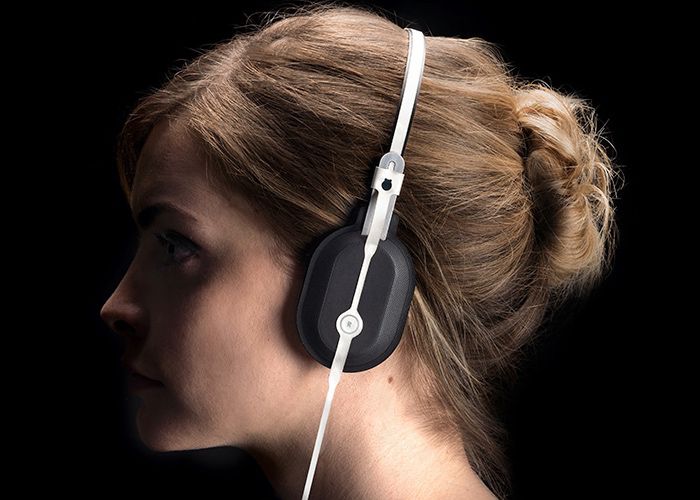French design student Maxime Loiseau made a splash at the Diplorama+ exhibition at New York City’s Design Week back in May. The exhibit featured eight projects of young ENSCI-Les Ateliers graduates that prompted a dialogue between aesthetics and technology and Loiseau’s design stood out.
Loiseau deigned and produced light, highly-simplified, nearly paper thin 3D printed headphones. While traditionally-manufactured headphones are built using up to 50 different parts, Loiseau’s use only eight. With his headphones, plastics are welded instead of using junction parts, expensive injection molds are given up in favor of embossing, and circuits are actually printed instead of made with wires.
Loiseau was inspired to name his “Roll to Roll Headphones” by the “roll to roll” electronics manufacturing process that creates electronic devices on a roll of metal foil or plastic. These techniques are often applied to laser cutting, embossing, printed electronic circuits, hot welding and, in general, the miniaturization of technologies. In Loiseau’s case, he takes an often overwrought staple of modern life and breaks it down to its simplest components.
Loiseau says, “Through an object, I challenge this new way of designing and producing an object. I question the advantages and benefits of ‘roll to roll’ production techniques, and also explore how those techniques influences the formal vocabulary of the object, made of thin strata and superposed layers.”
The speaker set up is based on the vibration of a piezoelectric cell. The electricity results from pressure that occurs on the plastic surface and, though it is only 1mm thick, it produces a comparable sound to a more conventional headphone speaker. With this design, Loiseau has made the material itself the technology. The “roll to roll” design is super easy to assemble without having to worry about injection molding.
Loiseau says, “The project doesn’t change the way we will use headphones. The purpose here is to offer a reflection about producing electronic devices in a smarter way. The more materials are advanced, the more they are paradoxically easy to work. Through one production process, we can then using less process, less material, energy and pieces. At the same time, I tried to use the possibilities of the process to create an aesthetic result from it, a more fair product, with no superfluous parts.”





